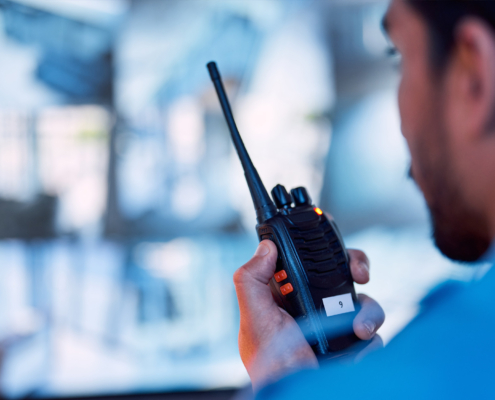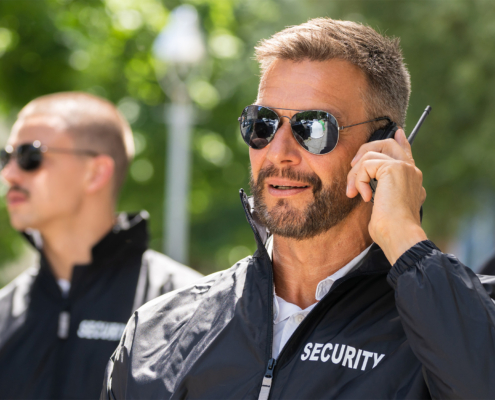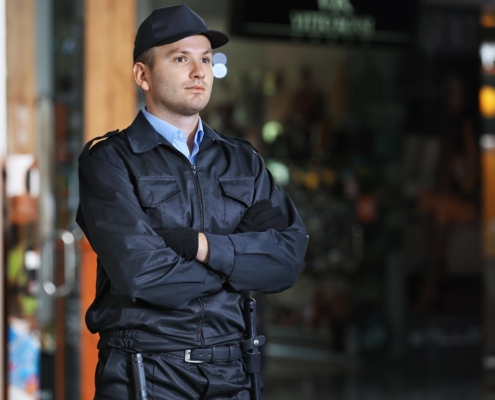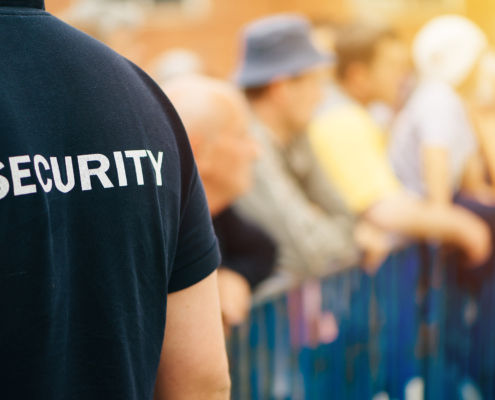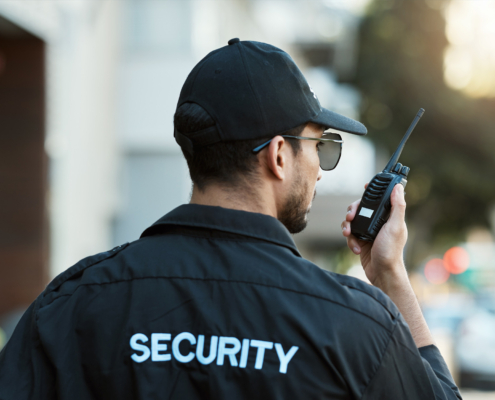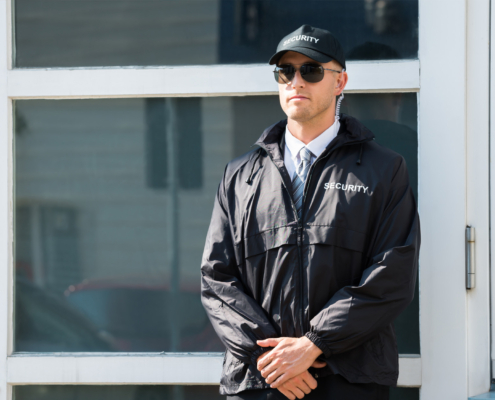 https://fortifiedinternational.com/wp-content/uploads/2025/05/Security-Guard-Walking-Building-Perimeter.jpg
1250
2000
Abstrakt Marketing
/wp-content/uploads/2024/05/cropped-logo.png
Abstrakt Marketing2025-05-14 11:20:182025-07-14 07:20:54Why Businesses Are Prioritizing Unarmed Security Guard Services in Texas
https://fortifiedinternational.com/wp-content/uploads/2025/05/Security-Guard-Walking-Building-Perimeter.jpg
1250
2000
Abstrakt Marketing
/wp-content/uploads/2024/05/cropped-logo.png
Abstrakt Marketing2025-05-14 11:20:182025-07-14 07:20:54Why Businesses Are Prioritizing Unarmed Security Guard Services in TexasUnarmed Security Challenges: The Risks, Realities, and Solutions
Security has become a critical element for individuals, businesses, and organizations alike. The traditional role of security guards—armed and ready to protect—has been the norm for many years. However, with changing needs and budget constraints, more businesses and institutions are turning to unarmed security professionals to maintain safety.
While unarmed security personnel can still provide valuable protection, there are unique unarmed security challenges they face that need to be addressed to ensure their effectiveness in safeguarding the public and property.
The Rise of Unarmed Security
Unarmed security guards are typically employed to maintain order, deter potential threats, and provide a visible presence in areas that may be vulnerable to crime or disturbance. Unlike armed security officers, they do not carry weapons such as firearms or tasers. Their responsibilities often include monitoring surveillance equipment, patrolling premises, greeting visitors, and responding to emergencies in a non-lethal capacity.
The use of unarmed security guards is on the rise for several reasons. First, it is often a cost-effective alternative to armed guards. With fewer expenses related to weapon training, insurance, and potentially legal liabilities associated with the use of firearms, many organizations opt for unarmed personnel as a way to save money while still maintaining a sense of security. Additionally, many businesses feel that unarmed security is sufficient for their needs, especially when the nature of their operations does not involve high-risk situations or sensitive locations.
However, while cost savings and practicalities are factors, the use of unarmed guards also raises concerns, especially when considering the potential risks and challenges they face.
Challenges Faced by Unarmed Security Personnel
Unarmed security officers face a range of challenges that can affect their effectiveness and safety on the job. Unarmed security challenges involve physical risks and psychological and operational concerns that can impact how security is managed.
Limited Ability to Respond to Threats
Perhaps the most glaring challenge faced by unarmed security guards is their limited capacity to handle dangerous or violent threats. Armed intruders, aggressive individuals, or active shooter situations are all examples of incidents where unarmed security professionals are at a disadvantage.
Without weapons to defend themselves or others, unarmed guards are left with few options when confronted with an immediate threat. In such high-risk situations, they may be forced to rely on de-escalation techniques, communication skills, and quick thinking to manage the situation, which may not always be enough to prevent harm or ensure the safety of others. Additionally, they may need to wait for law enforcement to arrive, which can result in precious time lost, during which the threat remains active.
Physical Confrontations and Personal Safety
While many unarmed security guards are trained in conflict resolution and non-violent de-escalation techniques, physical confrontations can still occur. In cases where a guard needs to intervene in a fight, break up a disturbance, or restrain a person for security reasons, their lack of weaponry can make it more difficult to ensure their personal safety. Even with defensive tactics training, unarmed security officers are at greater risk when confronting physically aggressive individuals, particularly if they are outnumbered or facing individuals who are larger and stronger.
This increased risk of physical harm can lead to anxiety and stress among unarmed security personnel, and in some cases, they may feel ill-prepared to handle such situations. Moreover, the mental and emotional toll of having to face dangerous situations without the means to defend oneself can lead to burnout or high turnover rates among security staff.
Dealing With Aggressive Behavior
Unarmed security guards often encounter individuals who display hostile or erratic behavior. These can range from verbal threats to physical intimidation or even acts of vandalism or theft. While many unarmed guards are trained in how to communicate and diffuse these situations, the lack of a weapon can limit their ability to handle certain types of aggression effectively.
In many cases, unarmed security personnel must rely on their ability to remain calm, maintain a composed demeanor, and de-escalate potentially dangerous interactions. However, when dealing with individuals who are intoxicated, mentally unstable, or deliberately confrontational, unarmed security officers may find themselves at a severe disadvantage, unable to prevent a situation from escalating.
Lack of Immediate Reinforcements
One of the key challenges of unarmed security is the potential lack of immediate backup. In situations where there are multiple suspects or when a serious threat emerges, unarmed security guards often have to rely on their own judgment and physical ability to handle the situation until law enforcement or armed personnel arrive.
This reliance on backup can lead to delays in response time, especially in remote areas or large facilities where help may not be readily available. While many unarmed guards are trained to handle emergencies, they are often unable to neutralize a threat without proper reinforcement, which puts both their safety and the safety of others at risk.
Public Perception and Authority
The presence of armed security guards often conveys a sense of authority and intimidation, which can deter potential criminals or individuals from acting out. However, unarmed security guards may not have the same perceived level of authority, particularly when dealing with individuals who are emboldened by the knowledge that the guard cannot respond with force.
In certain settings, such as high-end retail stores, events, or government buildings, an unarmed security guard might not be taken as seriously as their armed counterparts. This can undermine their ability to control a situation, which may lead to challenges in preventing or responding to misconduct.
Mental Health Strain
Unarmed security guards often work long hours, sometimes in isolation, which can have a negative impact on their mental health. They may face increased stress due to the lack of immediate support, the threat of confrontation, and the need to constantly stay alert to possible risks. The stress of dealing with aggressive individuals without the means to defend oneself can also contribute to feelings of helplessness and anxiety.
Over time, this mental strain can lead to burnout, which reduces the effectiveness of the security team. It is essential for employers to provide support, including proper mental health resources and training, to help unarmed guards manage the psychological demands of their work.
Discover six industries in Portland and Seattle that benefit from unarmed security guard services to enhance safety and protect assets.
Solutions to Address Unarmed Security Challenges
While unarmed security guards face significant challenges, there are several steps organizations can take to mitigate these risks and improve the effectiveness of their security personnel.
Enhanced Training
Proper training is essential for unarmed security guards to successfully handle a range of situations. This should include not only physical security techniques and conflict resolution but also advanced communication skills, de-escalation tactics, and understanding of mental health issues. Guards should be prepared to handle potentially volatile situations in a way that reduces the risk of harm.
Training in situational awareness, emergency procedures, and crisis management is also crucial to ensure that guards know how to respond effectively in a variety of scenarios.
Use of Technology
The integration of technology can greatly enhance the capabilities of unarmed security personnel. Surveillance systems, drones, and communication devices can help provide additional layers of protection and enable guards to monitor large areas more effectively. Additionally, panic buttons or emergency communication tools can alert law enforcement or other personnel in case of a threat, reducing response times and increasing the chances of a positive outcome.
Collaboration With Law Enforcement
In many cases, unarmed security personnel can work in close collaboration with local law enforcement to respond more quickly to threats. Establishing strong relationships with police departments and having a clear understanding of emergency response protocols can help reduce delays in response time and increase safety for everyone involved.
Clear Protocols for Emergency Situations
It’s vital for organizations to establish clear, well-communicated emergency protocols that outline exactly what unarmed security guards should do in high-risk situations. These protocols should ensure that guards are equipped with the knowledge and resources to respond appropriately while waiting for law enforcement or emergency responders to arrive.
Focus on Well-being
Supporting the mental and emotional well-being of unarmed security personnel is essential for reducing burnout and ensuring long-term effectiveness. Offering regular breaks, counseling services, and stress management resources can help improve morale and performance.
Solving Unarmed Security Challenges With Our Services
Fortified International understands unarmed security challenges faced by security personnel. That’s why we tailor our security services to address these risks while ensuring the safety of Oregon and Washington businesses. By providing comprehensive patrol services, advanced technology, and clear emergency protocols, we equip our unarmed security teams to effectively manage potentially volatile situations, ensuring a calm and secure environment for clients without relying on armed forces. Contact us today to schedule a meeting.


